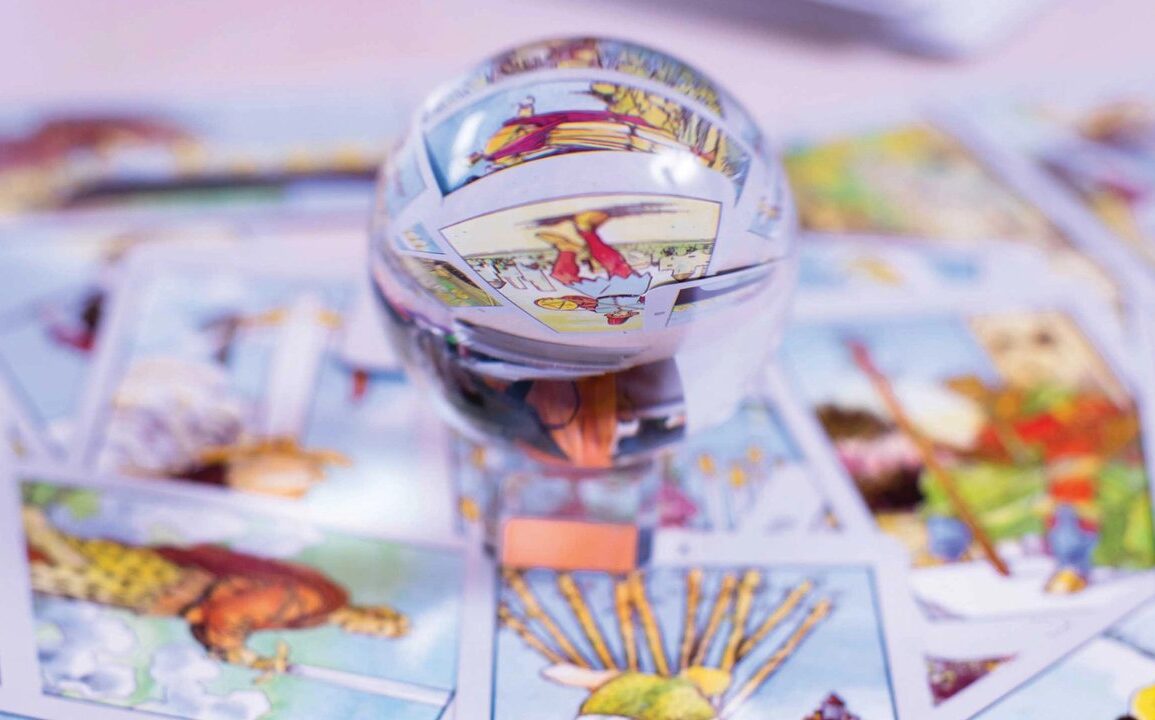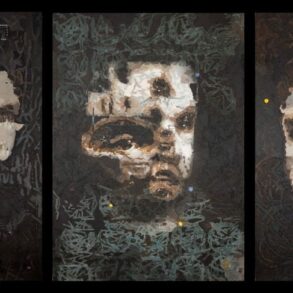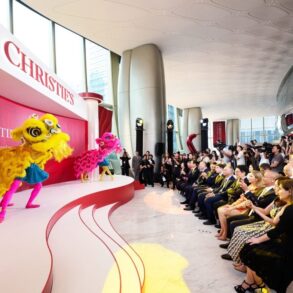
For nearly a decade, I’ve begun each year by making predictions about the art market in January that can be objectively evaluated come December. Although I end up being wrong more often than right, reasoning my way to a set of medium-term conclusions tends to unearth some thought-provoking aspects of important recent trends. Continuing the exercise feels especially fraught after the market correction of 2023, but here we go anyway.
1. Worldwide fine art sales at auction in 2024 will land within 4% of the equivalent total in 2023
Get ready for another year of hand-wringing, as the sharp turnaround the trade has been hoping for since early last year fails to materialise, largely due to unfavourable macroeconomic conditions.
Historically aggressive interest rate hikes by the US Federal Reserve over a 16-month stretch ending last July have tamped down inflation in the US, from a peak of 9.1% in June 2022 to 3.1% in November 2023. But even after the three rate reductions the Fed forecast for this year, its prime lending rate would still be 4.6%—steeper than at any point between 2009 and this latest campaign of rises. The UK and European Union’s central banks both kept their high rates steady in December, with the latter refusing to even hint at future cuts. This means borrowing money will stay expensive in these regions in 2024, limiting the capital reserves of the collecting (and speculating) class.
Meanwhile, China’s economy continues to look shaky amid its ongoing crisis in the market for real estate, with no strong reason to believe it will right itself soon. And numerous economists anticipate the UK will grow less than 1% in 2024.
I can’t see global fine art sales under the hammer improving by more than 4% year-on-year without a strong rebound from at least two of the perennial top three national markets (the US, China and the UK). That doesn’t mean sales won’t modestly increase, just that they won’t surge by an attitude-resetting amount.
2. At least one blue-chip artist will split with a gallery over fallout from the Israel-Hamas war
As of mid-December, the most divisive geopolitical conflict in recent memory had already led to several ruptures in the art trade: reports of various collectors threatening to return, auction or even literally burn works by artists in their collections deemed to be stridently pro-Palestine; Lisson Gallery’s indefinite postponement of an Ai Weiwei show scheduled to open last November after a (since-deleted) social media post by the artist implied an anti-Arab bias in US policy and media coverage; and Australia’s Anna Schwartz Gallery dropping the artist Mike Parr over his performance work that reportedly invoked “apartheid” and “ethnic cleansing” in regard to Israel’s political and military strategy in Gaza.
The effects in art’s institutional and publishing realms have included firings, resignations and departures by alleged mutual agreement, exhibition cancellations and removals of works from exhibitions in protest. There are very few higher-stakes fractures left for tensions over the conflict to induce: the dismissal or resignation of a museum director, the severing of a corporate partnership with an art institution and the breakup of a blue-chip artist and one of their dealers. Each of these three is on the table in 2024, but the last one seems the most likely of all to me.
3. Patrick Drahi will sell a minority stake in Sotheby’s to a private investor by 1 October
The concussive impact of higher interest rates on the debt-fuelled corporate empire of the Sotheby’s owner is the most overlooked story in the auction sector, mainly because tracking it requires a working understanding of concepts such as bond maturity rates, term loans and debt restructuring that would scarcely be any less accessible to professionals outside finance if they were explained in the runic language of druids.
But the point is that Drahi has an increasingly urgent need for cash; his companies have to repay about $21.3bn by the end of 2027 and $60bn overall, according to Bloomberg. Drahi has already sold hundreds of millions of dollars’ worth of assets to narrow the gap and, as he reportedly told a roomful of potential investors about his portfolio of corporations last September, “Everything is open… it’s just a question of offer and demand”.
That should include syphoning off part of Sotheby’s for the right price. Charles Stewart, Sotheby’s chief executive, denied in December that leadership is pursuing an initial public offering of the company, and Bloomberg reported the same month that Drahi had cut ties with the two investment banks hired to pursue that goal in the US in 2021. There are only two reasons for him to do this: either he has decided to hold onto the company in full, or he has decided to prioritise private investment instead.
Option two makes much more sense, especially in light of a Financial Times report that Drahi has had informal talks about selling a minority stake in the auction house to potential investors that “included European billionaires and the Qatar Investment Authority” during the past two years. It may be true that he views Sotheby’s as a unique asset that he is reluctant to sell, even in part, but that stance also happens to be a textbook negotiating position. My guess is the gravity of Drahi’s financial situation overcomes his sentiment, and a deal in principle gets announced by the fourth quarter of the year.
4. Neither Endeavor/Frieze nor MCH Group/Art Basel will acquire any more regional art fairs
Ever since Frieze announced last July that it would acquire the Armory Show and Expo Chicago, many in the trade have been anticipating a wave of consolidation, with several more regional fairs being absorbed by the two largest organisers as rising expenses, declining sales and an abundance of options compel dealers and collectors alike to become more selective. But given how tough the business is getting for smaller organisers, my question is this: Why would the largest players want to pay to take on their problems?
Remember, MCH Group, Art Basel’s parent company, already rolled up an array of regional fairs in a vastly favourable economic climate—and regretted it quickly. From September 2016 to July 2018, MCH Group acquired majority stakes in the India Art Fair and Masterpiece London, publicised plans to launch Art SG in Singapore (in collaboration with Sandy Angus and Tim Etchells) and became a minority investor in Art Düsseldorf. By November 2018, MCH Group announced it “would not proceed” with Art SG and would divest its shares in the India Art Fair and Art Düsseldorf. Masterpiece London, the last remnant of its regional-fair investment spree, was shuttered for good in early 2023 due to “escalating costs and a decline in the number of international exhibitors”. (MCH Group did invest in Art SG in 2022, but its share is only 15%.)
Frieze’s recent acquisitions aren’t just different from MCH Group’s earlier multi-continental approach; they may be unique. The Armory Show and Expo Chicago are likely the two largest, most consequential regional fairs in the most robust art market on the planet. I’m sure Frieze or Endeavor, its parent company, could buy more regional fairs elsewhere if desired, but being part of a broad category does not make each item in it equal. Wine and sparkling water are two bottled liquids in my home, but just because they’re nice to drink doesn’t mean my laundry detergent and drain cleaner are, too.
Whether out of curiosity, pragmatism or vanity, some artist of note is going to be the first to go into business with the AI companies
Endeavor/Frieze and MCH Group/Art Basel are certainly still hunting growth in 2024. I just think their leaders believe alternatives like digital initiatives, advisory arrangements and novel partnerships (see: Frieze’s No. 9 Cork Street gallery project) are more profitable pursuits than operating even more of the same events in an oversaturated sector.
5. One or more brand-name artists will strike a licensing deal with the maker of an AI-powered image generator
Although there’s still plenty of fear about the consequences of unbridled artificial intelligence (AI) in the realm of image-making, the technology has now attracted so much funding, opened the door to so much creative potential and accumulated so much power that artists in every discipline are largely reconciling themselves to co-existing with it for the rest of their lives. (At least in the US, where the will to use legislation to restrain tech in general and AI specifically lags far behind the EU.)
Whether out of curiosity, pragmatism or vanity (or a combination of all three), some artist of note is going to decide it is better to be the first to go into business with the AI companies rather than fight them, in what is probably a losing battle, to shield their work from unauthorised use as a visual reference point. The same thing has happened with just about every innovative technology since Andy Warhol partnered with Amiga computers in 1982.
Would, say, Marina Abramović or Jeff Koons shy away from cashing a cheque from OpenAI, the developer of DALL-E, when doing so could make them the artistic face of an evolution in digital image-making? I doubt it. But one way or another, we’ll know in 12 months.








